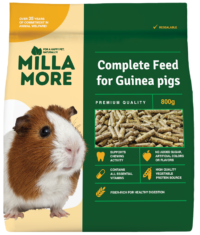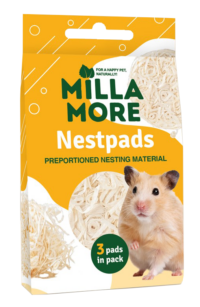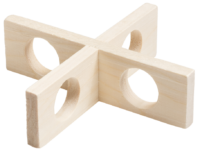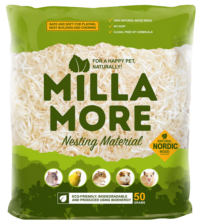Beginners Guide to Guinea Pig
Beginners Guide to Guinea Pig
To compare, hamsters (Dwarf) have an average lifespan of 3 years while guinea pigs have an average lifespan of 5-7 years with many living upwards into the double digits! As you can see, when looking to adopt a guinea pig you must be in this invested in the long term commitment. There are many factors affecting a guinea pig’s lifespan ranging from its diet, health conditions, and even breed. Many of the health conditions can be treated, as long as it’s treated early such as bumblefoot or overgrown teeth. To ensure that guinea pigs have the best chance of living their lives to the fullest, factors to take into consideration are a good diet, a big enough living space, daily exercise, social interactions with you and other guinea pigs, and good hygiene. Some people are allergic to guinea pigs. These allergies are a reaction to proteins in the animal’s saliva and urine (contrary to popular belief, the culprit isn’t hair or dander, although they often transmit these allergens during handling and close contact). Hay and wood shavings can also cause allergies.
Guinea pigs are extremely social animals, and it is highly recommended to keep at least two together. In some European countries, it is actually illegal to keep a guinea pig singly. Most guinea pigs get along well after introduction, although it can be more challenging to keep two boars (males) together than females. Patience, and providing adequate space, are key. Obviously, guinea pigs of opposite sex should not be housed together unless one or both are spayed or neutered. It’s best not to let your guinea pig interact with other pets in the household—especially any predatory animals like dogs, cats, and ferrets—as they can be easily injured. While they’re usually quiet pets, guinea pigs can make some fairly loud vocalizations, especially when they’re squealing for excitement about a meal. They also sometimes make a deep purring sound when they’re relaxed.
Guinea pigs will bond with the people who take care of them most, and many enjoy cuddling with their owners. Some also will squeal out of excitement when they see their favorite people. Guinea pigs have a range of personalities, from shy to outgoing. But overall they are gentle and affable pets.
Still, guinea pigs can be a greater time commitment than some people might expect from such a small animal. Plan to spend at least a few hours per day giving your pet attention out of its enclosure, allowing it to exercise and explore. And in addition to daily feedings, expect to spend time cleaning the enclosure at least once a week.
Housing the Guinea Pig
Guinea pigs need as large of a cage as you can fit and afford, and many pet shop cages marketed for guinea pigs are actually too small. Remember their cage is their primary space for exercise unless you’re able to take your pet out and monitor it for most of the day.
Always use a cage with a solid bottom and not a wire grate, as this can damage the feet of a guinea pig. One of the best options is a cage with a plastic base and wire top, which allows for good airflow. Add a 2-inch layer of bedding at the bottom. Avoid cedar and pine bedding, which can irritate a guinea pig’s respiratory system.1 Also, add a small animal hideout or nest, which you can find at most pet stores, where your guinea pig can go to feel secure and rest. And add some guinea pig toys for chewing and play, which also are available at most pet stores.
Place the cage in a fairly quiet part of your home. Loud noises and sudden movements can easily stress a guinea pig. Also, make sure the cage is out of direct sunlight and away from drafts.
Guinea Pig Food and Water
Guinea pigs are herbivores, meaning they eat plants. Offer your guinea pig an unlimited amount of hay every day. You can simply lay this in the enclosure or use a special feeder known as a hayrack. Just make sure some is always available. This aids digestion and helps to wear down their teeth, which grow continuously.
Guinea pigs cannot produce their own vitamin C, so they require it in their diets. Guinea pig pellets should be fortified with vitamin C. Follow the package instructions for how much to feed. Many owners put a day’s worth of pellets in a small bowl in their guinea pig’s enclosure in the morning and dispose of any uneaten pellets before the next day’s feeding. Opt for a ceramic bowl over a plastic or stainless steel one, so your guinea pig won’t be able to tip it over.
To supplement the hay and pellets, offer a variety of fresh fruits and vegetables each day in another small bowl separate from the pellets. You can feed these at any point during the day, but they should not exceed 10% of the total daily diet. Some good options include romaine lettuce, kale, and cilantro, as well as carrots, zucchini, kiwi, and blueberries. Keep the sugary fruits to a minimum as a treat just a few times a week. And always consult your veterinarian to make sure you’re feeding the appropriate quantity and variety of foods.
Finally, guinea pigs always need access to clean water. Aim to get your guinea pig using a water bottle that attaches to the side of the enclosure as soon as possible. Water bottles won’t spill or become contaminated like a water dish can. But don’t remove the water dish until you’re sure your animal is consistently drinking from the bottle.
Sources: Chicago Exotics Animal Hospital; the Spruce Pets





